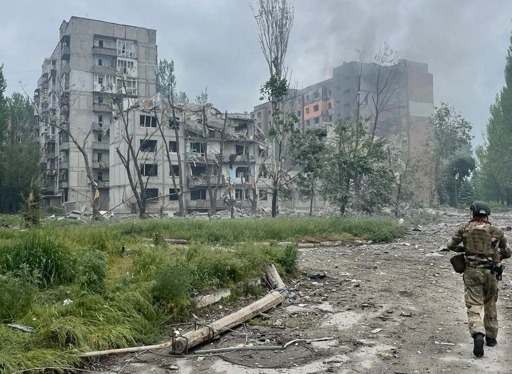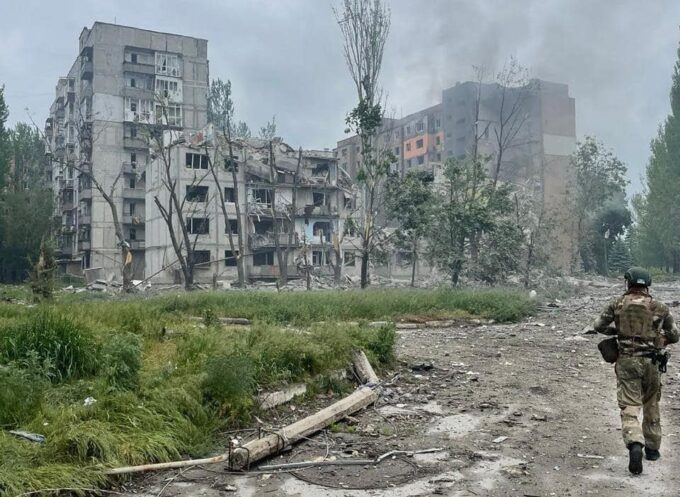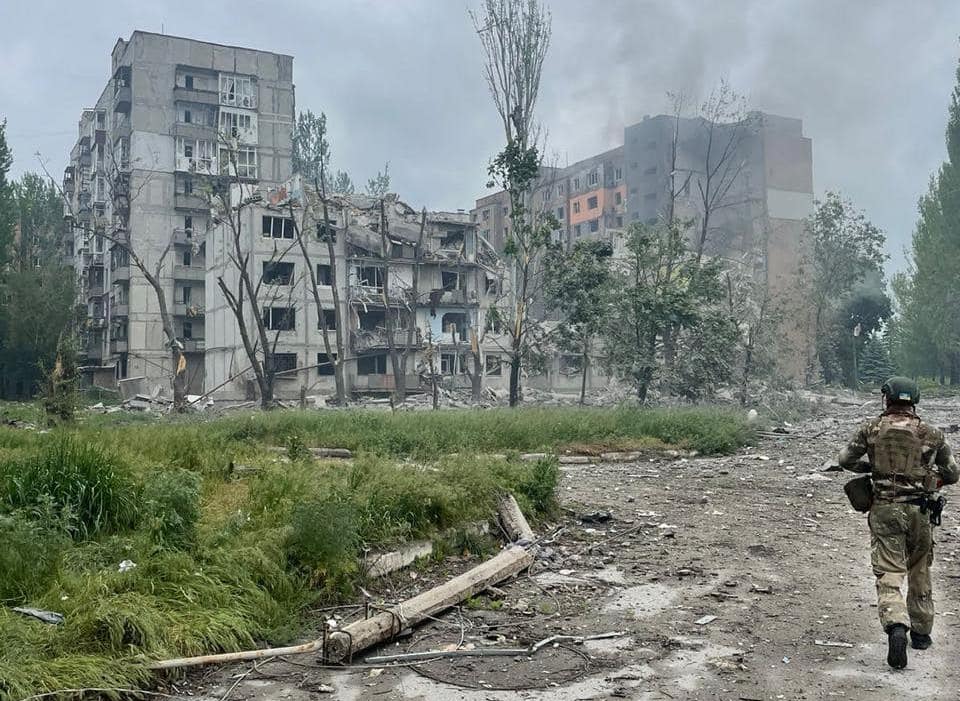Photograph Source: Donetsk Regional Military Civil Administration – CC BY 4.0
Before I get going, let’s get it out of the way: Russia’s invasion of Ukraine is a clearly illegal and evil and it has cost hundreds of thousands of lives. Throughout the conflict, there has been a kind of open secret inside Washington, one that has been reiterated to me by people at the State Department and the Pentagon for years: this was not an unexpected result, and Washington was aware that the Russians would invade well before the Ukrainians. The conflict pretty well exemplifies a standard American imperial strategy and helps to show how Washington maintains a world hegemonic position through the calculated destabilization of rival powers while sacrificing peripheral countries, basically as expendable chess pieces. The terrible tragedy in Ukraine represents the planned, deliberate implementation of a containment policy that treats sovereign countries as tools in the American plan to preserve permanent unipolar dominance.
As most interested people know, the strategic approach to Ukraine goes back decades, as Washington has violated documented promises, moving its military alliance eastward and functionally encircling Russia. The NATO expansion did not serve a legitimate security purpose for existing members of the bloc, but actually worked as a tool of American empire building, pushing Washington’s post-Cold War advantage and stretching its sphere of influence right to Russia’s border. Putin’s speech at the Munich Security Conference in 2007 explicitly challenged this imperial project and warned that NATO expansion was a legitimate provocation that showed the U.S.’s real commitments. These objections were dismissed as inconvenient obstacles to imperial expansion.
The 2014 color revolution shows the playbook in detail. We know from Nuland’s communications, among many other pieces of evidence, that the U.S. helped to orchestrate regime change in Kiev, essentially hand-picking the country’s leadership while insisting that it was all just democratic self-determination of a sovereign country. Washington straightaway gave legitimacy to the coup government despite documented violations of the country’s own constitutional system, showing how the U.S. redefines systems both within the global context and domestically to align with its interests. The effort was to rapidly integrate Ukraine into the U.S.’s military-economic system, making it an imperial client up against Russia.
The militarization of the country that followed is a familiar imperial tactic where a proxy is armed to fight Washington’s geopolitical battles. Many years of sophisticated American military training and weapons prepared the Ukrainians for a confrontation with Russia, even as the U.S. was (and still is) able to maintain plausible deniability in public. Such an approach creates a welcome scenario for the U.S. in that it provokes Russia sufficiently to get a military response and to inflict huge losses on Russia, but the strategy’s careful limitations mean that there was never going to be a decisive victory that would end the war too quickly.
The imperial logic is familiar. Washington successfully weaponized Ukrainian nationalism to weaken a key rival, while bearing minimal direct costs. Hundreds of thousands of Ukrainian and Russian casualties represent losses that are acceptable within U.S. imperial calculus, insofar as Russian power is diminished and U.S. hegemony preserved. The strategy mirrors historical imperial practices of using local populations as hapless cannon fodder in great power struggles, revealing the fundamentally exploitative nature of an American global dominance that masquerades as promoting democracy and human rights. Both the U.S. and Russia fundamentally operate as crime syndicates on a worldwide scale, pursuing power and wealth through violence, threats, and bribery.
Ukraine is tragically caught in the middle. The front lines will harden into a drawn-out stalemate, with no official settlement in the short term, leaving a heavily-armed buffer zone. This is consistent with what we’ve seen in some other recent Russian military conflicts and will ultimately be acceptable to both the U.S. and Russia. We should all notice that it was the Ukrainians who paid the price, and we should also remember the bloodless Washington cynicism that led us here.
The post The Bloodless Logic of Empire appeared first on CounterPunch.org.
From CounterPunch.org via this RSS feed






